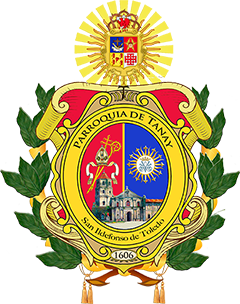Conservation and Renovation Explained: Key Insights into NCCA Standards
By SIDTP SoCom
Published on September 10, 2024
The historic San Ildefonso de Toledo Parish, a National Cultural Treasure in the Philippines, is in the subject of significant discussion regarding its need for renovations and beautification. With parishioners expressing concerns, there are pressing questions about whether these proposed changes align with the National Commission for Culture and the Arts (NCCA) preservation standards.
The Role of the Conservation Management Plan
The San Ildefonso de Toledo Parish is celebrated for its exceptional historical, cultural, and architectural value. Recognizing this significance, a Conservation Management Plan (CMP) has been developed to guide the preservation and management of the church. The CMP outlines policies and actions required to conserve the site, including addressing structural issues and maintaining historical authenticity.
Preservation vs. Renovation: Understanding the Guidelines
Under the guidelines of the NCCA, alterations to National Cultural Treasures, including San Ildefonso de Toledo Parish, are permitted but must adhere to rigorous conservation standards. These guidelines ensure that any changes made respect the historical integrity of the site while addressing necessary repairs or improvements.
Key Points of NCCA Guidelines:
- Adherence to Conservation Standards: Any alterations must follow established conservation practices to maintain the site’s historical value.
- Approval Process: Proposed changes require review and approval from the NCCA and other heritage conservation bodies.
- Respect for Original Design: Alterations should preserve the original design and materials of the church.
- Documentation and Transparency: Detailed plans and reports must be provided, explaining the scope and rationale for any changes.
- Minimal Intervention: Changes should be as non-intrusive as possible to preserve the original fabric and design of the church.
- Expert Consultation: Input from conservation experts and historians is crucial to ensure the appropriateness of any alterations.
The Need for Renovations
Advocates for the renovations argue that structural repairs, functional improvements, and aesthetic enhancements are essential for the church’s longevity and continued use. Addressing issues such as weakened foundations and outdated facilities can improve safety and accessibility while ensuring the church remains a vibrant place of worship and community gathering.
Rev. Fr. Ferdinand Delatado, parish priest, explained, “Our goal is to preserve the church’s rich history while making necessary improvements. We are committed to following the guidelines set by the NCCA to ensure that any changes respect the church’s historical and cultural significance.”
What the Renovations Will Include
The renovations will address various aspects such as electrical systems, plumbing, structural integrity, wood preservation, and soil testing. These improvements are crucial for the church’s longevity and safety.
Father Delatado explained, “The renovations depend on the recommendations from the NCCA, the Bishop, and the parishioners. Our architect will provide detailed explanations of the process. Think of it as a doctor offering recommendations for treatment and prevention.”
Community Concerns and Dialogue
While the need for renovation is acknowledged, some parishioners express concerns about potential impacts on the church’s historical character. The community is calling for transparency and open dialogue to address these concerns and ensure that any alterations are carried out with the utmost respect for the church’s heritage.
Moving Forward
As discussions continue, the parish and conservation authorities are working together to balance the need for renovations with the imperative to preserve the church’s historical integrity. The ongoing process will involve careful planning, expert consultations, and community engagement to ensure that San Ildefonso de Toledo Parish remains a cherished symbol of history and faith for future generations.
Community Engagement and Transparency
Concerns about the proposed designs are valid and important. Currently, only recommendations from the architect have been presented, which are part of our contractual agreement. All actions are taken through proper channels and procedures.
“The designs shown are still recommendations. Everything we do follows the correct process. We appreciate your questions as they show your love and concern for the church. Let us remain united in protecting our sacred space,” the parish priest uttered.
Moreover, he added that most of the designs included in the proposed renovation came from the public consultation of parishioners who have been testaments of what the church looks like in the previous decades or centuries.
The San Ildefonso de Toledo Parish stands as a testament to the rich cultural heritage of the Philippines. Navigating the delicate balance between preservation and renovation will be key to maintaining its legacy while addressing the needs of its worshippers and visitors.
For more information on the Conservation Management Plan and ongoing developments, please contact the San Ildefonso de Toledo Parish office or the National Commission for Culture and the Arts.



